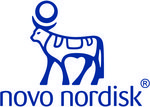Gerinnung beim Trauma Teil 1
Shownotes
Die trauma-induzierte Koagulopathie (trauma-induced coagulopathy, TIC) beschreibt einen multifaktoriell bedingten, abnormalen Gerinnungsprozess, der sich innerhalb weniger Minuten nach einem (schweren) Trauma und im Rahmen von massiven Blutungen entwickeln kann. Klassischerweise wurde die TIC anhand der „lethal triad“ (Azidose, Hypothermie und Koagulopathie) beschrieben. Es sind jedoch noch weitere Mechanismen an der Entstehung der TIC beteiligt – das Endothel mitsamt seiner Glykokalyx, das Protein-C System, Plättchen, Pro- und Antikoagulantien und das fibrinolytische System. Schock und Gewebeschaden sind die wichtigsten Treiber der TIC und aggravieren die Koagulopathie. Der Verbrauch und der gesteigerte Abbau des Fibrinogens bzw. des Fibrins (Hyperfibrinolyse) stellt einen weiteren, zentralen Pathomechanismus dar. Die exakten hämostaseologischen Veränderungen im Rahmen einer TIC sind interindividuell von Patient:in zu Patient:in unterschiedlich und können sich darüber hinaus auch im Verlauf des Traumas ändern, sodass von verschiedenen Phänotypen der TIC gesprochen wird. Klinisch lassen sich dementsprechend im Rahmen einer TIC biphasisch sowohl Blutungs- als auch thrombotische Ereignisse beobachten.
Übersichtspaper:
Moore EE, Moore HB, Kornblith LZ, Neal MD, Hoffman M, Mutch NJ, Schöchl H, Hunt BJ, Sauaia A. Trauma-induced coagulopathy. Nat Rev Dis Primers. 2021 Apr 29;7(1):30. doi: 10.1038/s41572-021-00264-3. Erratum in: Nat Rev Dis Primers. 2022 Apr 22;8(1):25. PMID: 33927200; PMCID: PMC9107773.
Zellbasiertes Modell:
Hoffman M, Monroe DM 3rd. A cell-based model of hemostasis. Thromb Haemost. 2001 Jun;85(6):958-65. PMID: 11434702. https://doi.org/10.1055/s-0037-1615947
Erwähnte Studien:
Bouzat, Pierre, et al. “Efficacy and Safety of Early Administration of 4-Factor Prothrombin Complex Concentrate in Patients With Trauma at Risk of Massive Transfusion: The PROCOAG Randomized Clinical Trial.” JAMA, vol. 329, no. 16, Apr. 2023, p. 1367, https://doi.org/10.1001/jama.2023.4080.
Dunbar, Nancy M., and Wayne L. Chandler. “TRANSFUSION PRACTICE: Thrombin Generation in Trauma Patients.” Transfusion, vol. 49, no. 12, 2009, pp. 2652–60, https://doi.org/10.1111/j.1537-2995.2009.02335.x. Floccard, Bernard, et al. “Early Coagulopathy in Trauma Patients: An on-Scene and Hospital Admission Study.” Injury, vol. 43, no. 1, 2012, pp. 26–32, https://doi.org/10.1016/j.injury.2010.11.003.
Johansson, Pär I., et al. “A High Admission Syndecan-1 Level, A Marker of Endothelial Glycocalyx Degradation, Is Associated With Inflammation, Protein C Depletion, Fibrinolysis, and Increased Mortality in Trauma Patients.” Annals of Surgery, vol. 254, no. 2, 2011, pp. 194–200, https://doi.org/10.1097/SLA.0b013e318226113d.
Liras, Ioannis N., et al. “Prevalence and Impact of Admission Hyperfibrinolysis in Severely Injured Pediatric Trauma Patients.” Surgery, vol. 158, no. 3, 2015, pp. 812–18, https://doi.org/10.1016/j.surg.2015.05.004.
McQuilten, Zoe K., et al. “Fibrinogen Is an Independent Predictor of Mortality in Major Trauma Patients: A Five-Year Statewide Cohort Study.” Injury, vol. 48, no. 5, 2017, pp. 1074–81, https://doi.org/10.1016/j.injury.2016.11.021.
Moore, Ernest E., et al. “Trauma-Induced Coagulopathy.” Nature Reviews Disease Primers, vol. 7, no. 1, Apr. 2021, p. 30, https://doi.org/10.1038/s41572-021-00264-3.
Moore, Hunter B., et al. “Hyperfibrinolysis, Physiologic Fibrinolysis, and Fibrinolysis Shutdown: The Spectrum of Postinjury Fibrinolysis and Relevance to Antifibrinolytic Therapy.” Journal of Trauma and Acute Care Surgery, vol. 77, no. 6, 2014, pp. 811–17, https://doi.org/10.1097/TA.0000000000000341.
Moore, Hunter B, et al. “Plasma-First Resuscitation to Treat Haemorrhagic Shock during Emergency Ground Transportation in an Urban Area: A Randomised Trial.” The Lancet, vol. 392, no. 10144, 2018, pp. 283–91, https://doi.org/10.1016/S0140-6736(18)31553-8.
Pommer, Peter, et al. “Multiplate Platelet Function Testing upon Emergency Room Admission Fails to Provide Useful Information in Major Trauma Patients Not on Platelet Inhibitors.” Journal of Clinical Medicine, vol. 11, no. 9, May 2022, p. 2578, https://doi.org/10.3390/jcm11092578.
Roberts, I., et al. “The CRASH-2 Trial: A Randomised Controlled Trial and Economic Evaluation of the Effects of Tranexamic Acid on Death, Vascular Occlusive Events and Transfusion Requirement in Bleeding Trauma Patients.” Health Technol Assess, vol. 17, no. 10, 2013, https://doi.org/10.3310/hta17100.
Schöchl, H., et al. “Hyperfibrinolysis Is Common in Out-of-Hospital Cardiac Arrest.” Resuscitation, vol. 84, no. 4, 2013, pp. 454–59, https://doi.org/10.1016/j.resuscitation.2012.08.318.
Schöchl, Herbert, Thomas Frietsch, et al. “Hyperfibrinolysis After Major Trauma: Differential Diagnosis of Lysis Patterns and Prognostic Value of Thrombelastometry.” Journal of Trauma: Injury, Infection & Critical Care, vol. 67, no. 1, 2009, pp. 125–31, https://doi.org/10.1097/TA.0b013e31818b2483.
Schöchl, Herbert, Cristina Solomon, et al. “Thromboelastometry (TEM®) Findings in Disseminated Intravascular Coagulation in a Pig Model of Endotoxinemia.” Molecular Medicine, vol. 17, no. 3–4, 2011, pp. 266–72, https://doi.org/10.2119/molmed.2010.00159.
Sperry, Jason L., et al. “Prehospital Plasma during Air Medical Transport in Trauma Patients at Risk for Hemorrhagic Shock.” New England Journal of Medicine, vol. 379, no. 4, July 2018, pp. 315–26, https://doi.org/10.1056/NEJMoa1802345.
Verni, Christopher C., et al. “Platelet Dysfunction during Trauma Involves Diverse Signaling Pathways and an Inhibitory Activity in Patient-Derived Plasma.” Journal of Trauma and Acute Care Surgery, vol. 86, no. 2, 2019, pp. 250–59, https://doi.org/10.1097/TA.0000000000002140.
Wutzler, Sebastian, et al. “Risk Stratification in Trauma and Haemorrhagic Shock: Scoring Systems Derived from the TraumaRegister DGU®.” Injury, vol. 45, 2014, pp. S29–34, https://doi.org/10.1016/j.injury.2014.08.014.
Wir danken unseren Sponsoren für die finanzielle Unterstützung:
- CSL Behring
- AstraZeneca Österreich
- Arjo Austria
- Biomedica Medizinprodukte
- Ekomed
- Roche Diagnostics
- Novo Nordisc







Angaben und Empfehlungen hinsichtlich klinischer Handlungen und Maßnahmen, sowie über Dosierungen, Applikationsformen und Indikationen von pharmazeutischen Spezialitäten, müssen vom jeweiligen Anwender auf ihre Richtigkeit überprüft werden. Trotz sorgfältiger Prüfung, übernehmen die Ersteller dieses Podcasts keinerlei Haftung für inhaltliche Fehler. Dieser Podcast ersetzt keine medizinischen Lehrbücher, Leitlinien, Fachinformationen oder eine ausführliche Literaturrecherche.